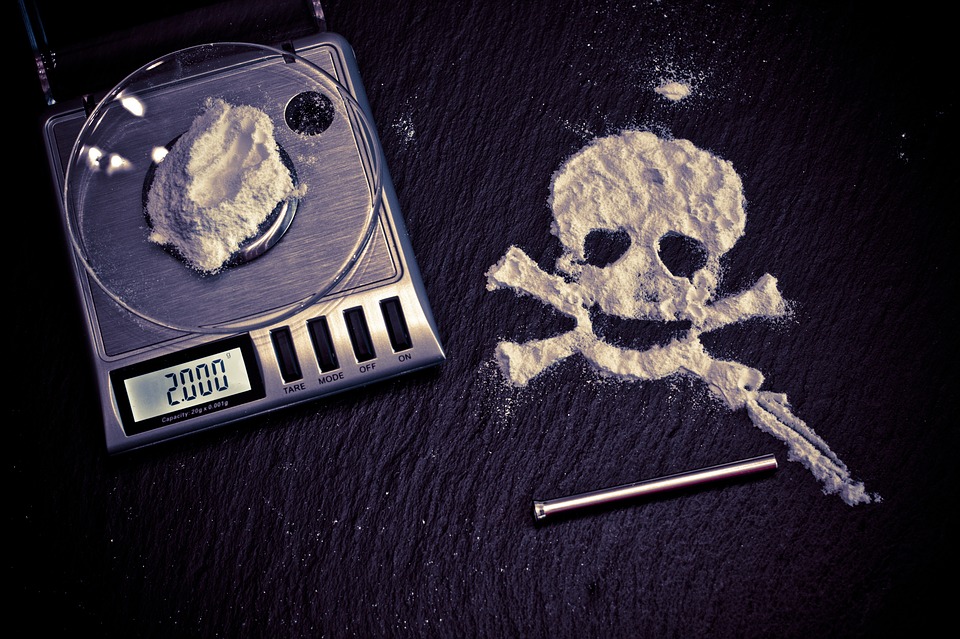Drug addiction is a major problem in the United States. More than 20 million Americans over the age of 12 are drug addicts. Almost 100 people die from drug overdose every day. This number has tripled in the past 20 years. Statistics also shows that drug and alcohol abuse among teenagers is increasing at an alarming rate.

Drug addiction can lead to severe mental, physical, and social consequences. These consequences not only ruin the lives of drug addicts, but also impact the lives of their friends and family members. Most illicit drugs act on the pleasure center located in the brain, creating a false feeling of happiness. The repeated use of such drugs can alter the way a person processes information. However, the degree of addiction and symptoms can vary from drug to drug.
Here is a list of 5 recreational drugs and how they can affect your body.
- Marijuana
Marijuana dependency is widespread among young adults. Statistics shows that nearly 69 million Americans over the age of 12 have tried this illicit drug at least once in their lifetime. In recent years, however, several states have legalized marijuana. Most marijuana users usually smoke pot for the first time in their adolescence. Pot, weed, grass, herb, and boom are a few common street names for marijuana.
Marijuana is a mixture of dried flowering tops, leaves, stems, and seeds of the Cannabis Sativa, commonly known as hemp plant. It is a powerful psychoactive drug with medicinal properties. It is an effective analgesic used in the treatment of chronic pain, muscle spasticity, anorexia, nausea, and sleep disorders.
Apart from creating feelings of pleasure, marijuana can also affect brain areas involved in memory, thinking, concentration, coordination, and time perception. Prolonged use of this illicit drug can alter brain function, resulting in the loss of memory and poor nervous-coordination. Most instant 10-panel drug test kits can detect the presence of marijuana in the urine even weeks after the last use.
- Cocaine
Cocaine is a highly addictive stimulant derived from the leaves of coca plants. In the past, ophthalmologists used it as a topical anesthetic during eye surgeries. Today, however, it is commonly used as a recreational drug. Cocaine usually looks like a white crystalline powder. Most users prefer to sniff this powder. However, it can also be rubbed into the gums, inhaled or injected.
Cocaine has a powerful stimulating effect on the nervous system, resulting in a short-lived state of euphoria. Cocaine abusers also experience withdrawal symptoms such as nausea, anxiety, depression, and paranoia. These symptoms are often so strong that a person can do almost anything to get the drug, even commit a crime. Overdosing on cocaine can lead to seizures, strokes, cerebral hemorrhage, heart attack, respiratory failure, and coma.
- Heroin
Heroin is an opioid drug manufactured from the pods of poppy plants. It is commonly available in the form of white or brown crystalline powder, or black tar. It goes by several street names such as brown sugar, smack, and horse, among others. According to the data published by the Center for Disease Control and Prevention (CDC), the rate of heroin-related overdose deaths has more than quadrupled from 2002 to 2014 resulting in more than 10,500 deaths in 2014.
Heroin can be smoked or snorted. Most users, however, inject it into their veins to get a quick high. Intravenous injection of heroin, however, increases the chances of an overdose. Drug abusers often share contaminated needles increasing the chances of catching contagious diseases such as HIV/AIDS and hepatitis.
After injecting heroin, the user may get the feeling of pleasure. Following this initial high, the user may experience drowsiness. People often experience hallucinations during this drowsiness, as if they are living in a dream. Prolonged use of heroin can cause several side effects such as nausea, vomiting, irritability, itching, and depression. It can also slow down your heart rate and breathing, affecting regular blood flow in your body.
- Ecstasy/Molly (MDMA)
Ecstasy is a psychoactive drug that became quite popular as a party drug in the late 1980s. The purest form of ecstasy contains higher concentrations of 3, 4-methylene-dioxy-methamphetamine (MMDA). MMDA has the psychoactive properties responsible for stimulating hallucinogenic effects. Today, however, ecstasy is sold as a mixture of substances such as LSD, cocaine, heroin, amphetamines, anabolic steroids, and methamphetamines among others. The drug is usually swallowed as tablets. However, users can also snort it as a powder. More than 11 million Americans aged 12 or older have used ecstasy at least once in their lifetime.
Ecstasy can have both, stimulant and hallucinogenic effects creating a feeling of well-being and enhanced self-confidence. It also suppresses fatigue, hunger, fear, and pain. However, once the sensational feeling subsides, users feel exhausted, irritated, sad and depressed. Frequent users of ecstasy may experience mood swings, aggressive behavior, and intense anxiety. Prolonged use can also lead to serious psychological problems.
- Amphetamines
Amphetamines are a distinct group of stimulant drugs that affect the level of dopamine and serotonin in the brain. They usually create a feeling of euphoria, awareness, and suppress fatigue as well as pain. They are sometimes used as prescription medicine to treat attention deficit hyperactivity disorder (ADHD).
Amphetamines can be snorted, injected, smoked or orally consumed. Regular use can quickly lead to tolerance of the drug. If the use of amphetamines stops abruptly stops, it may lead to strong withdrawal symptoms such as extreme fatigue, excessive hunger, dehydration, and seizures. The most common psychological withdrawal symptoms may include panic attacks, increased paranoia, irritability, anxiety, depression, and mood swings.
Millions of people, especially teenagers, become victims of drug addiction in America. It is a complex problem that affects the mental, physical, financial, and social well-being of the abuser as well as his/her loved ones. Recreational drugs often target the pleasure center of the brain creating a feeling of euphoria. Despite the well-known consequences, drug addiction among Americans, especially young adults, is increasing at a disturbing rate. However, the degree of addictive-ness and symptoms can vary from drug to drug.




























No Comments
Leave a comment Cancel